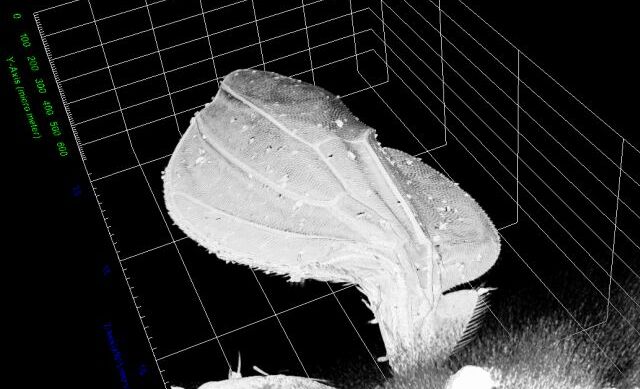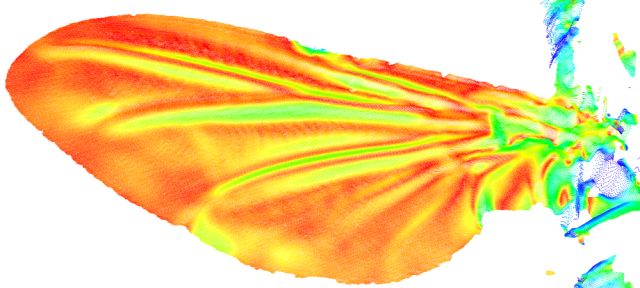Biomaterials
During up- and down motion, insect wings may tremendously deform. These changes protect the wing against structual damages but also change shape and camber. The latter has severe aerodynamic impact on lift production and moment control during flight.
Many previous studies on flapping flight relied on the assumption that wings of insects operate as rigid, non–deformable flat plates. However, similar to wing deformation in birds and bats, and unlike rigid plates, many insect wings undergo severe flexing and bending within a single stroke cycle that may alter aerodynamic force production. Thus, throughout the last decade, many researchers have focused on fluid-structures interfaces (FSI), investing the elastic deformation of insect wings. Studies suggest that modulation of the wing's trailing edge flexibility affects leading edge vorticity, thus providing a tool for manoeuvring control in insects.
For more information on Biomaterials, please contact:
henja.wehmannuni-rostockde
Wing elasticity measurement
Wing deformation in flies are measured using optical methods. We
determine the deflection under physiological loads on the wing surface.
Besides the various force components produced by flapping wings, wing deformation depends on the wing’s primary structural properties: the spanwise stiffness and the chordwise flexibility. The leading edge of most insect wings is comprised of a stiff structure with a three-dimensional relief, providing high rigidity in the spanwise direction. Thus, the flexural stiffness along the span, which is the overall bending stiffness of the wing, is one to two orders of magnitude greater than along the wing chord. Under aerodynamic loading, the wing’s camber may change according to the wing’s vein pattern, the veins’ curvature, and the joints between cross and longitudinal veins. These threedimensional skeletal networks of relatively stiff veins are interconnected through thin membranous and flexible cuticle cells.
Overall goal of the experimental part of our research is to demonstrate wing kinematics, wing deformation and body responses in free- and tethered flying flies facing turbulent environmental flow conditions, including evaluations of flow conditions at the wing employing DPIV. The experiments are conducted in two differently-sized fly species i.e. the house fly Musca domestica (12 mm body length) and the fruit fly Drosophila melanogaster (3 mm body length).
Color coding of 3D wing structure
Wing deformation is measured using a profilometer that estimates
height from the distortions of on-wing projected visual patterns.



